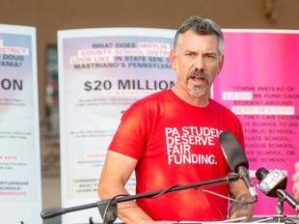“Power concedes nothing without a demand. It never did and it never will. Find out just what any people will quietly submit to and you have found out the exact measure of injustice and wrong which will be imposed upon them, and these will continue till they are resisted with either words or blows, or with both. The limits of tyrants are prescribed by the endurance of those whom they oppress.”
― Frederick Douglass
Students at University of Florida are calling on their leaders to take action on climate change. “Young people in Florida want to see a future where their social institutions take the climate crisis seriously,” said Jake Lowe of advocacy group Campus Climate Network. “What happens on a college campus has a lot more reach than just that campus community.”
Truth. Universities in the United States are in relationships with the life, land, water, atmosphere, and our economic and cultural heritage. In 2021, over million undergraduate students were enrolled at about 6,000 U.S. higher education institutions that spend almost $14 billion annually on energy alone. It’s resulting in tens of millions of tons of carbon dioxide per year from a dirty grid and little onsite renewable energy deployment on campuses. We have bus and commuter fleets, water and waste water treatment plants, and haul billions of tons of refuse annually. On campuses, much of our land management continue to favor carbon-heavy maintenance instead of carbon-sinking, water-smart, and biodiversity-enhancing infrastructure and habitats. As a sector, higher education has much to do.
There are universities leading the way in every corner of the country and at every size. In Pennsylvania, a place you might not suspect leadership on renewable energy, little Dickinson College has a small farm with a methane digester that processes cow manure and food waste into a biogas to generate electricity. Until recently, Penn State had the largest solar power purchase agreement in Pennsylvania outside of state government with a 70 megawatt project with Lightsource BP (I worked on that project).. That distinction will now go to University of Pennsylvania who have signed into a 25-year 220 megawatt solar power purchase agreement with Community Energy. It is one of the largest university solar projects serving higher education in the nation. As Anne Papageorge, vice president of Penn’s Division of Facilities & Real Estate Services, said, “This agreement not only allows the University of Pennsylvania to continue to demonstrate strong leadership on climate action, but it also provides a competitive price on electricity,” Where’s Florida?
At the University of New Hampshire, they manage their land more as a living system than as an object to be groomed. Their farms “are managed as integrated agro-ecosystems that include biological, physical, and human-related components.” Their Sustainability Institute collaborates with an Ecosystem Task Force, academic classes, faculty, Facilities office, and the Office of Woodlands and Natural Areas “to promote and maintain sustainable landscaping throughout campus for the education and enjoyment of the community, the enhancement of natural systems, and the protection of biodiversity.” They have a Climate Action Clinic that “provides knowledge, capacity, and resources to help companies, non-profits, and communities address their carbon footprints. Where’s Florida?
Across the United States, what is being researched, taught and learned is changing for the better. At Penn State, we have developed the Local Climate Action Program, a one-year highly professionalized program that partners upper-level students with governments to conduct greenhouse gas inventories and initiate climate action planning. Our Climate Consortium is a collective of internal and external partners committed to identifying, creating, and implementing research-based solutions to climate change. Where’s Florida?
Students understand that silence is not an option. They know better than anybody that any self-respecting university ought to be judged by how well it deals with the long-term consequences of its policies, programs, and projects are for its students, for society, and for the web of life. They understand that when universities change–especially big universities–they change energy development, they can work with the land, and they build the skills and mindsets we need to meet the climate challenge.
